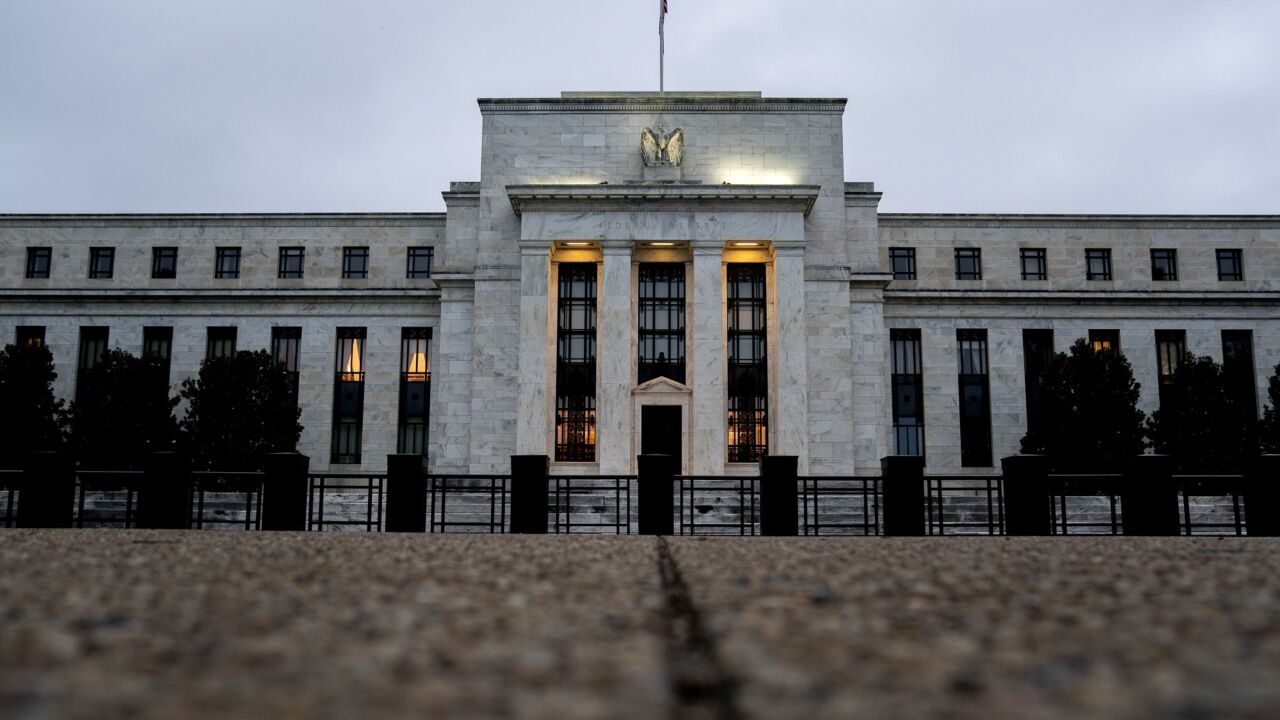
Community banks increased loans in the fourth quarter and strengthened their net interest margins, two key drivers of profitability. But continued progress may depend on tamed inflation and steady interest rates, and both of those factors are on shaky ground early in 2025.
Elevated consumer prices and high borrowing costs kept lending momentum in check last year. Margins, by extension, struggled to muster momentum for much of 2024. But NIM improvement late in the year — as banks pushed deposit costs lower thanks to three Federal Reserve interest rate cuts — spurred optimism.
The median fourth-quarter NIM for banks under $10 billion of assets was 3.31%, according to an S&P Global Market Intelligence analysis. That was up 10 basis points from a year earlier. Still, the fourth-quarter gain marked the only substantial increase of 2024 as lending advances proved modest, including in the final months of the year. Banks that drive down their funding costs while boosting the interest they earn on loans can drive robust margin expansion.
Median year-over-year
Bankers said during the earnings season that started in mid-January that they anticipated more favorable conditions in 2025, assuming interest rates would at least hold steady, or creep lower later in the year. Lower rates would
Coral Gables, Florida-based
Many banks need stronger loan growth to continue driving interest income gains. That's because while the Fed's rate cuts lowered deposit costs, they also lowered the earnings generated on variable-rate loans. Loan growth would enable banks to offset those declines via volume.
"It's a function of the repricing of the loans," Amerant Chief Financial Officer Sharymar Calderon Yepez said.
But further rate reductions, or at least flat rates, are dependent on lower inflation. That is hardly a sure thing. The threat of an overheated economy could persuade the Fed to keep interest rates elevated for longer, potentially hindering banks' collective ability to grow their loan portfolios.
After inflation dropped from highs above 9% in 2022 to below 3% last year — enabling the Fed to make the recent rate reductions — prices climbed early this year.
The Bureau of Labor Statistics said Wednesday that prices rose 0.5% in January on a seasonally adjusted basis, the biggest monthly jump since August 2023. Prices climbed 3% for the 12 months through January, up from 2.9% in December. At that level, inflation
Now, one of President Trump's major policy priorities — imposing tariffs on a vast swath of imported goods — could reignite price spikes. This adds to the likelihood that the Fed will hit the brakes on rate reductions this year, some economists and analysts warn.
The latest data "demonstrate that there continues to be upward inflationary pressures in the economy, and this excludes the impacts of potential tariffs," said Jeremy Swan, managing principal at CohnReznick. "Ongoing policy uncertainty combined with a hotter than hoped for inflation reading is expected to cement a Fed pause in rate changes, with many now arguing that rate increases could be coming if the trend continues."
China vowed retaliatory actions that could spawn a full-blown trade war. On Thursday, the president floated the idea of "reciprocal" tariffs in response to any levy another country places on U.S. products.
BNP Paribas Chief U.S. Economist James Egelhof said his bank's base case calls for the Fed to hold steady on rates through mid-2026. If the central bank does move, a rate increase is just as likely as a decrease, given the tariff uncertainty and still-elevated inflation readings, he said.
A rate hike could both curb loan demand and put fresh upward pressure on banks' deposit costs. That could drive NIM contraction for many lenders.
Origin Bancorp in Ruston, Louisiana, entered 2025 with the expectation that it would grow loans by as much as 8% for the full year.
In the fourth quarter, the $9.7 billion-asset bank boosted its NIM by 14 basis points from a year earlier to 3.33%, supported by lower deposit costs. Ongoing price discipline on funding, combined with loan growth, could help Origin to expand its margin to 3.40% this year, the bank's executives said during the company's most recent earnings call.
"We assumed two 25-basis-point Fed rate cuts with a relatively stable shape of the yield curve and a deposit beta in line with our historical trends," Chief Financial Officer William Wallace said.
Analysts, however, are advising against any rate assumptions.
Inflation signals "are telling the Fed, 'No more cuts,'" Moody's analyst Chris Stanley said. "Bankers should strategize beyond the Fed's next move — anticipate volatility along the full yield curve and its effects on pricing strategies, interest income forecasts and balance sheet management activities."





